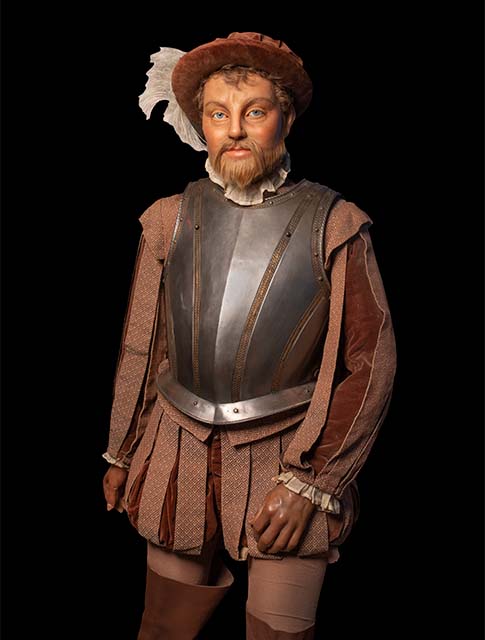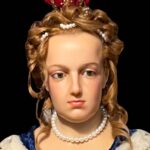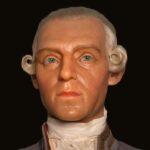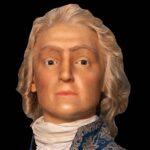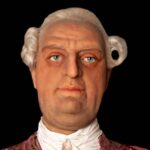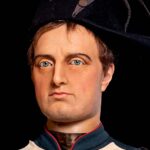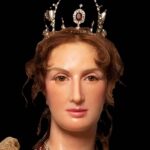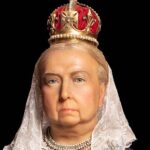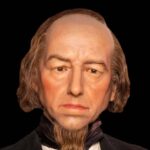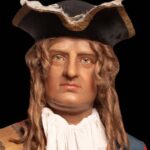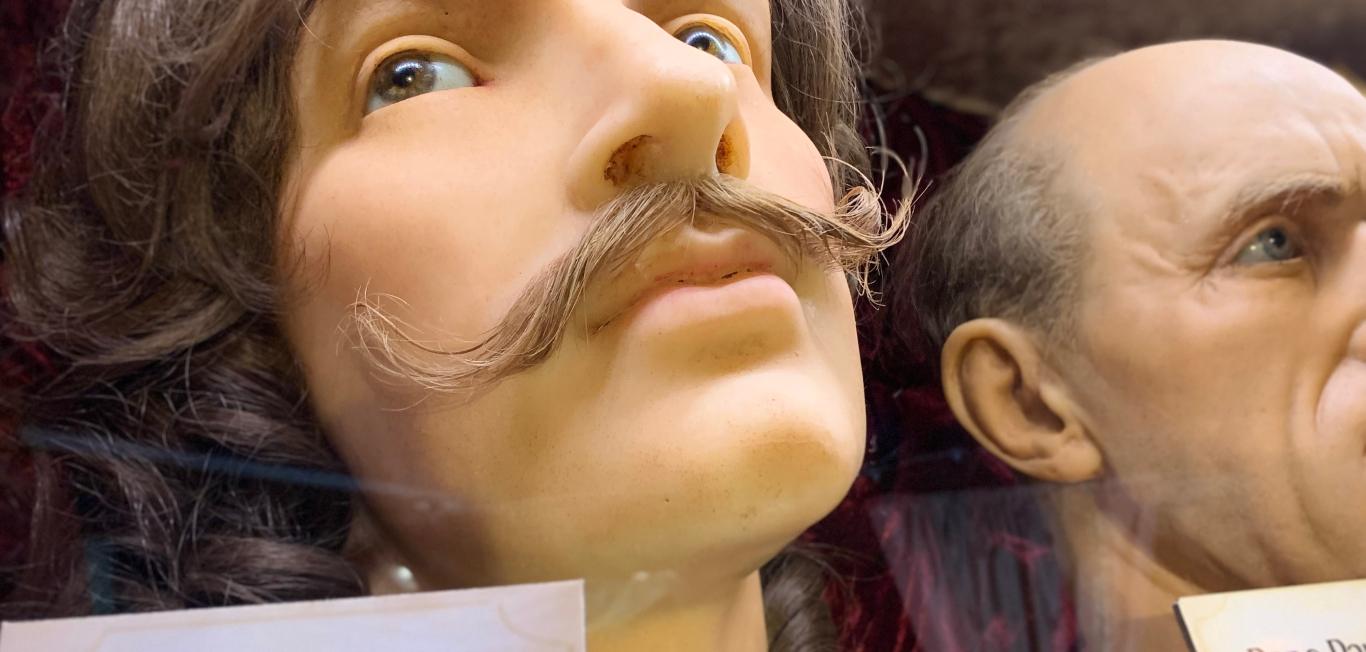About Sir Francis Drake
Sir Francis Drake was a renowned sailor and slave trader in England. He was born in Tavistock and started his sailing career as a young boy after his family moved to Kent. He contributed to England’s history through the slave trade and his voyages across the globe. As a slave trader, Drake acquired slaves in Africa and Spain through conquests. As a result, he became an enemy of the Spaniards, and it is said that King Philip II offered a bounty for his head. However, his intelligence helped him to escape. Unfortunately, his ships were ultimately destroyed by Spanish ships and he barely escaped, making Sir Francis Drake a sworn Spanish enemy. He dedicated his missions to limiting Spain’s expansion across the globe, and he later led England’s invasion of Spain and destroyed Armada ships. He became the first man in England to navigate the globe through the dangerous waters of the Pacific. He died at the age of 55 after contracting dysentery during his last expeditions.
Early Life of Sir Francis Drake
Sir Francis Drake was born in Tavistock, Devon, England. He was the oldest son of Edmund Drake and Mary Mylwaye. He had 11 siblings with whom he enjoyed and explored life within Tavistock, Devon. Drake’s birth date remains unknown due to a lack of records about it. However, he is thought to have been born in 1540 to a farmer and preacher, Edmund Drake. Since Drake’s father worked on the estate of the second Earl of Bedford, Lord Francis Russell, its owner, became his spiritual father, Drake bearing his name. During the . , it is believed Drake’s family relocated to Kent to avoid the impacts of the religious revolt. It is said that they lived in an old ship since they had no place to call home, driving Drake’s desire to sail and his fascination with it.
DID YOU KNOW?
Drake’s birth date remains unknown due to a lack of records.
When Drake was 13 years old, he became an apprentice and traveled through seas and oceans abroad to conduct trade between England and France. He was skilled and behaved well, characteristics that fascinated his shipmaster. During this time, Drake sharpened his skills as a sailor on merchant ships, skills that propelled his prowess on the naval ships of his adulthood. However, during his childhood, his experience with his father may have driven his morally corrupt actions. It is thought that his father ran to Kent during the rebellion due to his involvement in petty crimes as a Protestant preacher. Drake took after his father — he desired power at an early age and began a quest to amass wealth through trade.
Personal Life and Legacy of Sir Francis Drake
Sir Francis Drake’s history is filled with fascination due to his daring expeditions. Drake’s personal life was filled with death, and he had no children. In 1569, Drake married his first wife, Mary Newman, and lived with her for 14 years. After her death, Drake married his second wife, Elizabeth Sydenham, in 1585. Elizabeth was 20 years younger than Drake and came from a wealthy family, of which she was an heiress. Despite marrying twice, Drake did not sire any children. He amassed a lot of wealth that he left to his nephew Francis, who was named after him.
Drake left a legacy that remembers him and his expeditions. For example, a British TV series was produced in 1961 titled “Sir Francis Drake,” in which Terence Morgan plays Drake, showcasing his achievements in his lifetime. In addition, a movie titled “The Immortal Voyage of Captain Drake” was produced in 2009, in which writer Rafael Jordan accounts for most of Drake’s historical expeditions throughout the years. These works show that Drake became an inspiration in the entertainment industry as well as the education sector, especially through the video games “Drake’s Fortune” and “Drake’s Deception.” As a result of his legacy, multiple places bear Drake’s name, such as Drake’s Island, Drakes Bay, the HMS Drake, and Sir Francis Drake Boulevard in the U.S.
DID YOU KNOW?
As a result of his legacy, multiple places bear Drake’s name.
Interesting Facts About Sir Francis Drake
Drake Circumnavigated the Globe and Became a Successful Slave Trader
Sir Francis Drake made history with his life experiences and missions. Drake became the first Briton to circumnavigate the world. He began his navigation career at the early age of 13 when he maneuvered between England and France. His apprentice skills propelled him into the slave trade, becoming one of the first slave traders in Britain. As a slave trader, he voyaged to West Africa with the assistance of his cousin John Hawkins to capture slaves and seize Portuguese slave ships to steal their human cargo. As a result of his prowess in acquiring cheap and readily available slaves, he became instrumental in the slave trade. However, since the slave trade was considered illegal by Spanish law, Drake became an enemy. The Spanish king is said to have put a price on his head, the Spanish people calling him “the Dragon” since he easily escaped capture or defeated his enemy through treacherous means. During one of his slavery expeditions, Drake’s fleet was attacked and destroyed by Spanish ships. Four vessels were destroyed, and most of his crew was captured or killed. The experience and loss made Drake develop bitterness and seething hatred against King Philip II and Spain in general.
Drake Collaborated With Escaped Slaves to Conduct a Raid
Drake teamed up with escaped slaves to achieve one of his greatest and most profitable raids. Drake enlisted former Spanish slaves to ambush a Spanish mule train and steal its cargo, which comprised gold and silver. Drake used the slaves to strike a blow to their masters in retaliation for some ships the Spanish had destroyed. Drake’s crew and the band of slaves overpowered the train and hauled the huge treasure, burying about 15 tons of it since they could not carry it, with Drake amassing more than 20,000 pounds of gold and silver.
Only One of His Ships Survived His Global Expedition
During Drake’s global circumnavigation, only one of his ships survived the voyage. Drake was an intentionally conniving individual who thrived through his deceptive behaviors. In 1577, he started his global voyage from England and made his crew think that they were sailing to Egypt for their usual slave trade activities. However, Drake’s intention was to navigate the globe. He revealed his mission after the fleet passed the Mediterranean by announcing his intentions to reach South America and the Pacific Ocean and become the first English fleet to accomplish the voyage. However, the expedition experienced challenges when two ships abandoned the mission; one sank during a storm, and the other retreated after separating from the fleet. By the time Drake was reaching the Pacific, only his ship, Golden Hind, remained on the voyage and returned to England.
Drake’s Success in Politics
Drake gained popularity after successfully returning to England in 1580 and became a member of parliament and mayor of Plymouth in 1581. During his political career, he returned to the sea to conduct raids and expeditions against the Spanish fleets and prevented an attack on England by the Spanish Armada.
Achievements
Slave Trader and Privateer
One of Sir Francis Drake’s accomplishments was successfully capturing slaves and selling them to Spain to serve in plantations. He also engaged in illegal slave trade activities using his fleet of ships against the Spanish, angering Spanish King Philip II, and making an enemy out of him.
A Commissioned Privateer of Queen Elizabeth I`
As a privateer, he went on several missions commissioned by the queen and won them. The queen gave Drake a license to seize any property that King Philip II owned. He became a Spanish enemy and was injured multiple times during Spanish attacks in Panama, which almost killed him. However, he successfully recovered and acquired silver and gold from the enemy on his way back to Plymouth.
First English Explorer to Circumnavigate the Globe
Drake voyaged to Panama and successfully completed the mission to earn the trust and recognition of the queen. As a result, Queen Elizabeth commissioned him to explore the Pacific and North America, and he successfully crossed the Strait of Magellan through his prowess in reading global maps.
Mayor of Plymouth
After his successful voyage across the globe, Drake became influential as Plymouth’s mayor and as a member of parliament in the House of Commons. However, he did not abandon his career as a sailor. He later became a commander in the Royal Navy and rose to the rank of vice admiral.
The Historic Defeat of the Spanish Armada
Drake defeated Spain in an expedition that left the Spanish fleet completely destroyed. His achievement came from his desire to defeat his long-time enemy King Philip II. It was achieved through an expedition that destroyed the Spanish mainland and Portuguese coastline in order to limit the king from planning any form of retaliation against England. As a result of his success, Drake became an admiral of an English fleet during the Spanish invasion of 1588.
Later Years
Sir Francis Drake was an accomplished man, recognized throughout history for his influence. He commanded his fleet, led by a ship called Judith, with the company of his cousin John Hawkins. Sir Francis Drake participated in the slave trade between Africa and Spain, a business that attracted attention from the Spanish because it was against the law of New Spain. When he and his cousin John Hawkins were stranded at the Mexican port of San Juan de Ulúa in 1568, the other men who were with them were slaughtered, but Sir Francis Drake and John Hawkins made a narrow escape. It was this experience that made him despise the Spanish. In 1572, on a privateer’s commission issued by Queen Elizabeth I, he captured the port of Nombre de Dios in Panama and was badly wounded. He remained at Nombre de Dios till he recovered from his injuries. In recovery, Drake stole gold and silver from the Spanish settlements and returned to Plymouth in 1573.
In 1577, Drake went on a voyage across the Pacific with Thomas Doughty and John Wynter, whom he did not trust. During the voyage, Drake suspected Doughty of mutiny, arrested him, and he was later executed. In 1578, he reached the Pacific Ocean while commanding his flagship Golden Hind. It was with this flagship that he attacked Spanish ports and cities, claimed California in 1579, and returned to Plymouth in 1580 to become the first Englishman to navigate the globe. During the Anglo-Spanish War in 1585, the queen of England dispatched him to seize several regions in North and South America. King Philip II of Spain was compelled to attack England as a result, and enormous Armada ships were built for the expedition. Sir Francis Drake became the vice admiral of the English navy in 1588. King Philip II was able to seize a Spanish ship as the English soldiers valiantly fought against the Armada. Eventually, they overcame the Spanish Armada.
DID YOU KNOW?
Sir Francis Drake became the vice admiral of the English navy in 1588.
FAQs
Why was Sir Francis Drake so famous?
Drake was famous due to his sailing prowess, for example, his global voyage across the Pacific Ocean, and his missions to capture and rule Spanish ports. He also became famous in the slave trade between West Africa and Spain. Drake became a sworn enemy of King Philip II, dedicating his missions to destroying his plans to attack England.
How did Sir Francis Drake change the world?
Drake changed the world by opening it up to England for conquest and colonization. He captured Spanish towns and ports and established England’s rule beyond its borders. He also propelled the slave trade, which became widespread due to the need for cheap labor on plantations in Spain.
What did Sir Francis Drake do?
Sir Francis Drake’s main role was sailing for personal missions as a merchant, and later as a leader of Queen Elizabeth’s commissions across the globe.
What are two things Sir Francis Drake is known for?
Drake is best known for leading English troops to destroy Armada ships and defeat King Philip II. He is also known for becoming the first Englishman to successfully circumnavigate the world.
What was Sir Francis Drake’s cause of death?
Drake died from dysentery, which he developed sometime around the Battle of San Juan. The dysentery gave him a fever that led to his death at 55 years of age.
